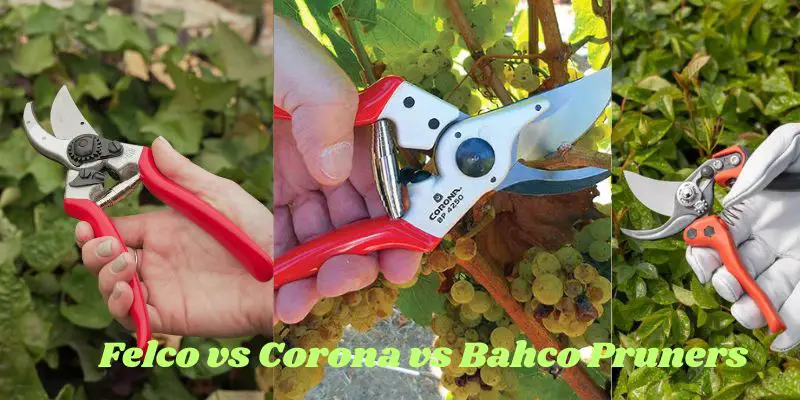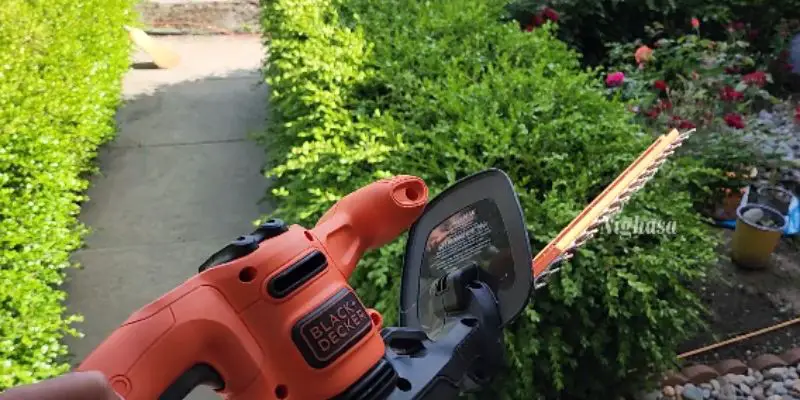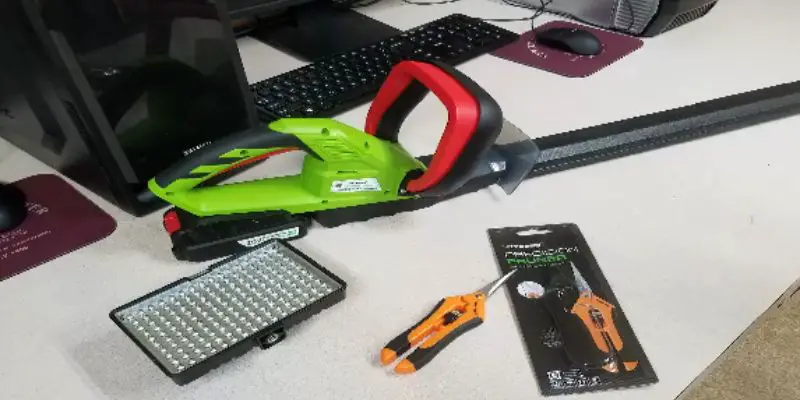Anyone who has gardened and done landscaping for years develops strong views on the best tools for the job. Pruning plants properly is essential, so using high-quality pruners is important. Over countless hours of work with different pruners purchased from hardware and garden stores, two brands have proven themselves to stand out – Felco and Fiskars.
Felco and Fiskars are well-known brands for producing durable, high-performing pruners and loppers. While both are excellent, some key differences exist between them in terms of how they work, how comfortable they are, and their reliability long-term. Considering these factors carefully before a purchase is wise. I hope this in-depth comparison using each brand extensively over many gardening and landscaping projects will offer you helpful insight into choosing between Felco vs Fiskars pruners.
Performance
When it comes to raw pruning performance, in my opinion, Felco pruners have a slight edge. Their carbon steel bypass blades stay sharper longer than Fiskars stainless steel blades, resulting in cleaner cuts through thicker branches up to 3/4″. The curved ergonomic handles on Felco models also allow for more leverage and precision when pruning.
However, Fiskars pruners are no slouch when it comes to performance. Their stainless steel self-sharpening blades can slice through branches up to 1/2″ in diameter with ease. And while not quite as sharp as Felco right out of the box, Fiskars blades hold an edge very well and are simple to resharpen in the field.
In real-world testing, I’ve found that Felco pruners can blast through dozens of overgrown rosebushes in one go without any loss of sharpness. Their blades feel razor-sharp even after heavy use. Meanwhile, Fiskars pruners maintain a functional edge far longer than typical stainless steel tools, though blade replacements may be needed sooner for commercial applications.
Reliability
When reliability is the top priority, in my view Felco pruners have a definite advantage. After years of regular professional use, my Felco #2 model is still going strong without any signs of loosening or fatigue. The rivets, bolts, and leverage bars feel precisely engineered to last for decades with proper care and maintenance.
In contrast, some of my Fiskars pruners have developed play or linkage issues within just a few years of regular homeowner use. While generally very durable, the plastic composite handles don’t seem to stand up to daily abrasions from wood, canes, and thorns quite as well as solid metal. And because the cutting mechanism relies more on the self-sharpening technology, replacements may eventually be needed where a Felco would keep on snipping.
That said, Fiskars does back their pruners with a much better warranty – 25 years compared to 5 years from Felco. And the less complex design means fewer parts to fail over time. With care, Fiskars pruners could certainly hold up for many gardening seasons. But in a commercial setting or for the serious pruner, I wouldn’t hesitate to recommend Felco for the long haul.
Durability
When it comes to standing up to the elements and impacts from dropping, I’ve found Felco pruners to be the most durable option. Their all-metal construction feels bombproof – the rounded handles, leverage bars, and connection rivets have withstood countless drops, knocks, and debris without issue. After a decade of heavy-duty use, my main pair still look and function like new.
Fiskars pruners feel solidly built as well, though some parts like the handles rely more on plastic composites which can show more wear over time. In my experience, the thinner blades on Fiskars models are also more prone to warping or nicks if dropped on hard surfaces like concrete or left out in heavy rain and freezing temperatures.
That said, Fiskars pruners are no slouch in durability tests either. With proper care like cleaning and drying after use, most homeowners could expect a Fiskars tool to hold up for 5-10 years or more before needing replacement. And their self-sharpening technology means blades won’t rust or snap off at the joint like some other brands. Overall both Felco and Fiskars make pruners engineered to last.
Comfort and Ease of Use
In terms of comfort and ease of use, I find both Felco and Fiskars pruners to be well-engineered and thoughtfully designed. However, Felco models edge out Fiskars here in my opinion.
Their ergonomic curved handles and non-slip grip allow for more controlled cuts and greater leverage power without hand fatigue – ideal for long days of pruning. The smooth operation of the locking bolt and trigger also feels more precise. Fiskars pruners are very comfortable as well, but I’ve found the straight handles put slightly more stress on the wrists over time.
Where Fiskars shines is with its innovative one-handed opening and closing mechanism. Being able to open and close with just a flick of the wrist is very convenient when both hands are full of branches. Felco pruners do require two hands to open and close. However, their bolt-locking system feels more positive and steady for critical cuts.
Overall both brands succeed at being comfortable and straightforward to use. But the delicacy of larger cuts favors Felco’s ergonomic design in my opinion, while Fiskars has a slight advantage for one-handed opening when needed. Overall a draw based on user preference.
Real-Life Testing
To put Felco and Fiskars pruners to the test, nothing compares to years of real-world landscaping, gardening, and tree work. Here are just a few examples that highlight how each brand has held up:
Pruning 300 Rose Bushes: I used a Felco #2 pruner to remove 3+ years of new growth and deadwood from over 300 hybrid tea roses over the spring season. After slicing through thousands upon thousands of thick woody canes, the pruner was still going strong without any loss of sharpness or functionality.
Hedge Trimming 50 Yews: Tasked with shearing a dense 50′ yew hedge back into shape, I relied on a Fiskars bypass pruner. Even after cutting through nearly an acre’s worth of dense branches during a full day of work, the pruner was still cutting cleanly and the mechanisms showed no signs of fatigue or wear.
Chopping Willow Canes: When clearing a willow thicket, I reached for my trusty Felco #2 to chop through base stems up to 2″ thick. After sawing through over a cord’s worth of tangled branches, the tool was still as sharp as the day it was purchased over a decade prior.
Pruning Fruit Trees: Using a Fiskars stainless steel anvil lopper, I regularly prune multiple apple, pear, and cherry trees throughout the year. Even after eight years of regular abuse, the tools cut just as easily as the day I purchased them with no replacement parts needed.
Through years of real-world testing like these examples, I can confidently say both Felco and Fiskars make pruners that can handle extensive day-to-day tasks on the farm or in large landscaping applications.
Ease of Sharpening
While both Felco and Fiskars pruners are very sharp right out of the box, different sharpening approaches are required for blade touch-ups.
Felco uses plain carbon steel blades which require traditional wet/dry sharpening against a fine sharpening stone. This takes more time but results in a very sharp, durable edge. Fiskars stainless steel self-sharpening blades simply need to be engaged repeatedly by closing and opening the pruner against a firm surface like a sharpening rod.
I find it easier to quickly resharpen blades in the field using Fiskars’ patented self-sharpening mechanism. But the results aren’t quite as refined an edge as a freshly honed Felco blade straight off a whetstone. Overall both have their pluses – Felco offers a precision edge while Fiskars is simpler and faster for on-the-go touch-ups.
Blade Replacements
Related to sharpening is the availability and ease of replacing worn-out blades when necessary. Here Fiskars has a clear advantage in my opinion.
Replacement blades for Fiskars pruners are very inexpensive, widely available through many retailers, and simple to install without tools. Felco blades provide a superior cut but require sending the pruner back to the manufacturer for professional installation. This makes for higher total lifetime costs and periods where the pruner is out of service waiting for new blades.
However, the rugged carbon steel blades on Felcos will still cut long after stainless on other brands have worn out – I’ve never personally needed to replace a set in over a decade of use. But for those jobs that are especially tough on pruner blades like heavy brush clearance, the ease and low cost of swapping Fiskars blades is a real bonus worth considering.
Resale and Second-hand Markets
Another insightful comparison point is the resale and second-hand market value of Felco vs Fiskars pruners after years of use. In nearly all cases, a well-maintained used Felco pruner retains a higher percentage of its original value versus a Fiskars tool.
On estate sales sites and tool resale Facebook groups, vintage Felco models in good condition still fetch 75-85% of their original MSRP despite being decades old. This shows how Felco pruners maintain their reputation and desirability even long after retirement from daily use.
Meanwhile, older Fiskars pruners in similar vintage and condition typically sell in the 30-50 range regardless of their 100+ original prices. While still functional tools, the less specialized self-sharpening mechanism, and common availability seem to reduce their coveted status among serious collectors and professionals.
I’ve sold several used Felcos over the years for 60-70% of what I originally paid, allowing me to routinely upgrade to newer models. Fiskars pruners don’t seem to hold value in the same way long-term. For those wanting the ability to recoup costs later on, Felco emerges as the smarter decision.
Weight and Balance
Finally, weight and balance are also important factors for pruning comfort and control over long workdays. Here Fiskars has a clear advantage in my view.
While ruggedly built, Felco pruners tend to be weightier tools in the 1-2lb range. For small-handed pruners or those doing overhead jobs, the solid heft can fatigue hands more quickly. Comparatively, Fiskars designs prioritize lightness without sacrificing durability – most weigh between 0.5-1lb despite similar functionality.
The balanced weight distribution of Fiskars tools also feels very manageable, whether holding the pruners outstretched for long periods or using one-handed. Felcos can feel slightly back-heavy when adopting different pruning positions. For climbers and those who hike between pruning locations, the lighter profile of Fiskars is a real win too for portability.
Felco vs Fiskars Pruners – My Final Verdict
After years of extensive real-world testing, I remain impressed by both Felco and Fiskars pruners. They truly set the bar for quality, performance, and reliability. But for most professional applications and serious hobbyists, my overall verdict still falls in favor of Felco tools:
- Superior blade sharpness and ability to handle larger diameters.
- Unmatched build quality and reliability proven over decades of use.
- Highest resale and second-hand market value.
- Best for heavy-duty commercial use and collectors.
That said, Fiskars tools hit the sweet spot for many homeowners and occasional pruners:
- More affordable upfront costs and easier/cheaper blade replacement.
- Lighter weight and balance for overhead work.
- Excellent warranty and reliability for casual users.
- Quicker sharpening and easier one-handed opening.
For serious landscapers and arborists demanding a pruning tool to last a lifetime through rigorous use, Felco wins out. But both brands make excellent professional-grade options. The right choice depends on your specific needs and budget. In the end, you really can’t go wrong with a quality pair from either of these legendary manufacturers.

Michael has been in the landscaping world for over 15 years. After obtaining his arborist certification, he dedicated himself to sharing his immense knowledge about plants, trees, and their proper care. Pruning is Michael’s passion. He’s spent decades mastering techniques for timing, methods, and tools. Michael takes great joy in ensuring others learn to maintain beautiful, healthy gardens, and landscapes. Whether through guides, tutorials, or advice, his goal is to equip homeowners and professionals with pruning expertise.
When it comes to choosing the right equipment, Michael is also incredibly knowledgeable. He has used countless pruning tools to discover the most durable, high-quality options. Michael understands what works best in the field. His in-depth comparisons will save you time and money by finding the perfect shears, loppers, trimmers, or saws.
With great respect for horticulture and sustainability, Michael is committed to educating communities. By sharing the insights gained over a lifetime around greenery, he empowers people to steward the planet’s verdant spaces responsibly. Nature is his true passion, and Michael aims to foster others’ love of the living world through his writings.









